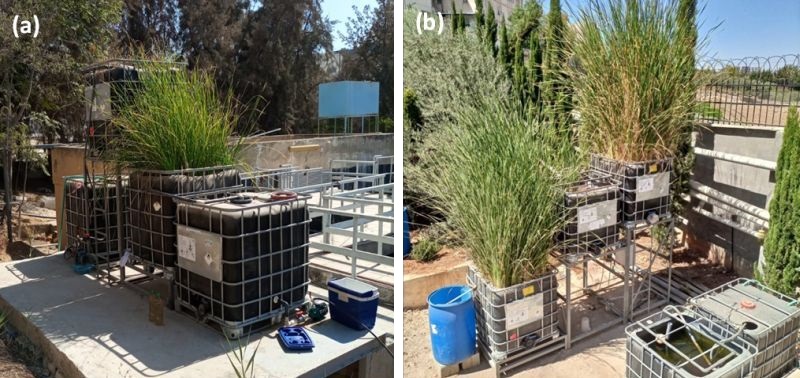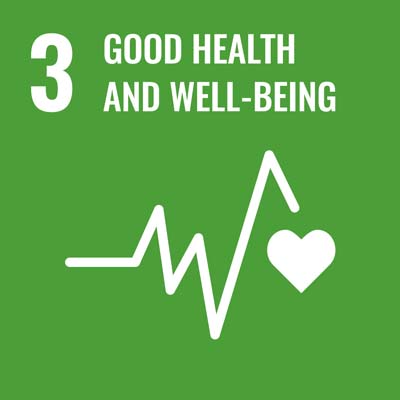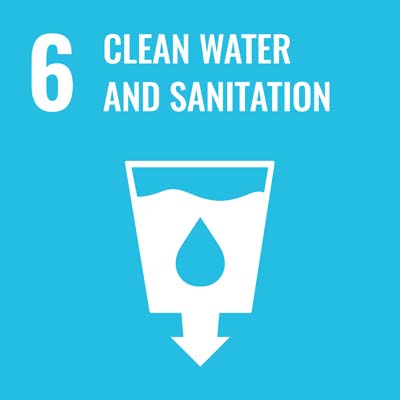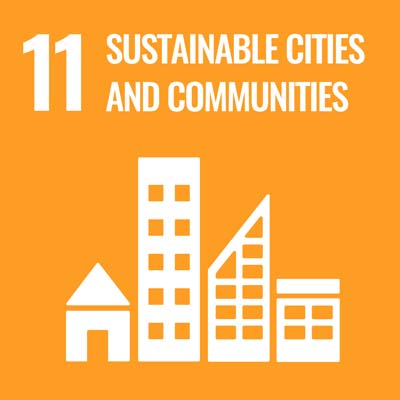- DatesApril 2021 to December 2024
- SponsorRoyal Academy of Engineering
- Funded£80k (Phase I, 2021-2023), £50k (Phase II, 2024)
- PartnersRoyal Scientific Society (Jordan); Jordan Sweden Medical and Sterilization Company (JOSWE); Dar Al Dawa Group (DAD)
Jordan, the world's second most water-scarce country, treasures every drop. Its pharmaceutical sector, while vital, generates significant wastewater containing recalcitrant pharmaceutical residues, presenting a high challenge for treatment and water reuse. The Phase I project (TSP2021\100376, 2021-2023) developed innovative constructed wetland (CW) technologies as a cost-efficient nature-based solution to treat effluents from two Jordanian pharmaceutical industries. Two tailored mesocosm systems exhibited excellent treatment performance and were reported in peer-reviewed journal article, conference proceedings, and media reports. Two pilot-scale systems were also constructed and preliminarily assessed at industrial sites. The established partnership continued the collaboration beyond the project's completion, leading to the filing of a shared IP for USPTO (series number 63/532,389) in August 2023.
The Phase II project (TSP-2324-6\136, 2024) will build upon and advance the achievements from the Phase I project, which aims to obtain strong evidence supporting the use of innovative nature-based solutions to treat pharmaceutical wastewater for reuse in the context of water safety, economy viability and practical implementations. Two existing will be monitored at industrial sites for one year, aligning with the Jordanian water reuse standard JS202/2007. Antimicrobial resistance (AMR), a non-statutory parameter, can be generated during pharmaceutical treatment, creating barriers for safety reuse of the treated wastewater. This project will assess AMR as a proactive contaminant in treated effluent. Cost-benefit analyses will be conducted, and training courses on wetland design, operation, and troubleshooting will be provided to stakeholders to gain confidence for the implementations. Moreover, with the support of industry partners and governmental stakeholders, targeted supplementary fund will be sourced for full-scale technology implementations.
Existing on-site pilot-scale hybrid constructed wetlands, built from our recently completed TSP project (TSP2021\100376), for the treatment of pharmaceutical industrial wastewater in DAD (a) and JOSWE (b).

Related publications
- Journal article: https://onlinelibrary.wiley.com/doi/10.1111/wej.12907
- Conference paper: https://cms.gnest.org/cest2023/p/cest202300073
- Zhang Y, Lyu T, Zhang L, Button M, Arias CA, Weber KP, Shi J, Chen Z, Brix H & Carvalho PN (2019) Microbial community metabolic profiles in saturated constructed wetlands treating iohexol and ibuprofen, Science of the Total Environment, 651 (2) 1926-1934.
- Zhang L, Lyu T, Zhang Y, Button M, Arias CA, Weber KP, Brix H & Carvalho PN (2018) Impacts of design configuration and plants on the functionality of the microbial community of mesocosm-scale constructed wetlands treating ibuprofen, Water Research, 131 (March) 228-238.
- Lv T, Carvalho PN, Zhang L, Zhang Y, Button M, Arias CA, Weber KP & Brix H (2017) Functionality of microbial communities in constructed wetlands used for pesticide remediation: Influence of system design and sampling strategy, Water Research, 110 (March) 241-251.
- Lv T, Zhang Y, Zhang L, Carvalho PN, Arias CA & Brix H (2016) Removal of the pesticides imazalil and tebuconazole in saturated constructed wetland mesocosms, Water Research, 91 (March) 126-136.





